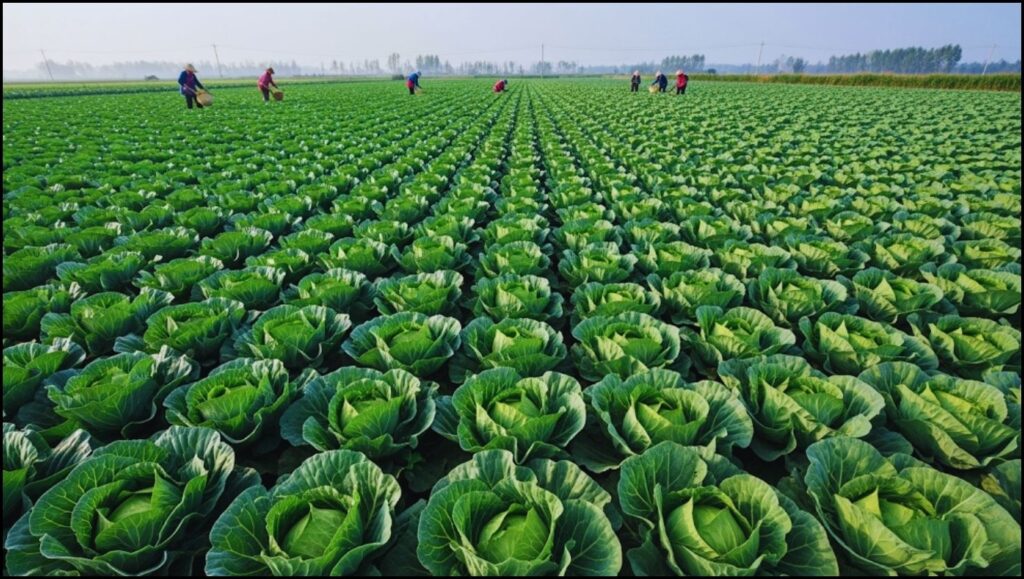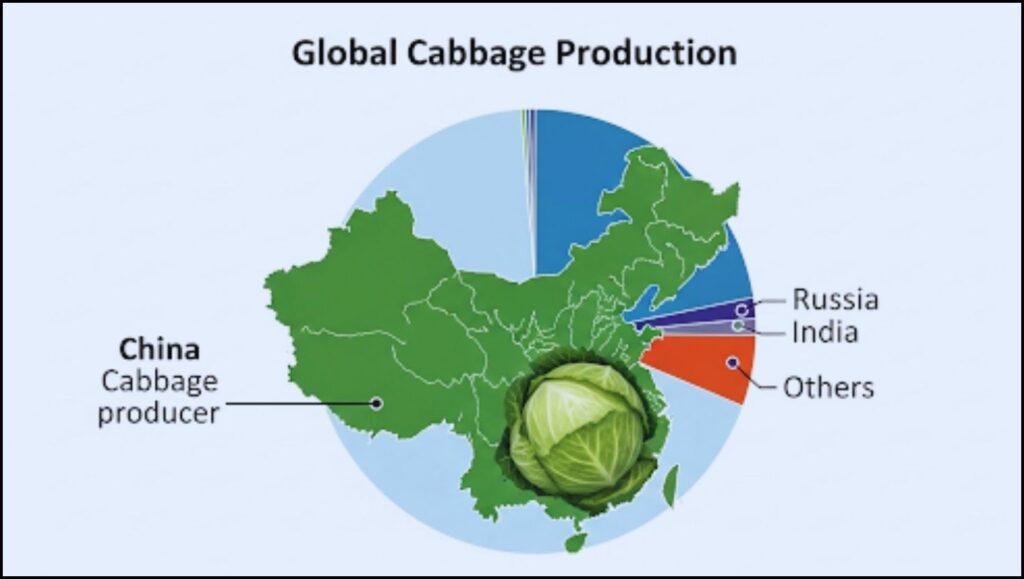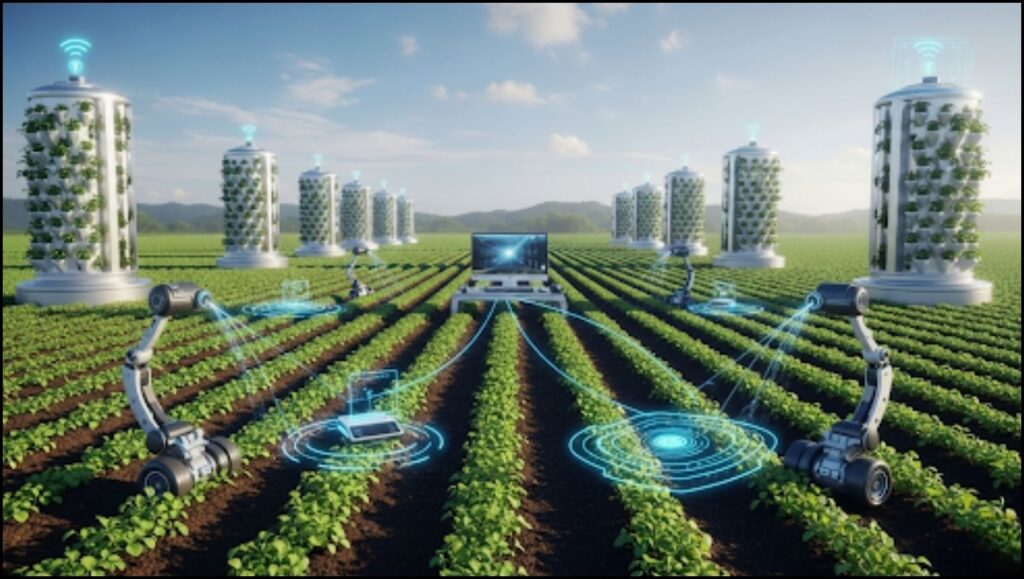China stands as the global leader in cabbage production, cultivating nearly half of the world’s total supply. The country’s massive agricultural output of this staple vegetable is a testament to its vast farming infrastructure, favorable climatic conditions, and deep-rooted cultural integration of cabbage in its cuisine. This position highlights not only China’s agricultural prowess but also its critical role in the international food supply chain for this widely consumed crop.

China’s Decisive Lead in Cabbage Cultivation
The dominance of China as the world’s largest cabbage producer is undisputed. According to recent data from the Food and Agriculture Organization of the United Nations (FAO), China’s annual cabbage output exceeds 34 million metric tons. This figure represents approximately 48% of the total global production, making its output larger than the combined production of the next several countries on the list.
The sheer scale of Chinese agriculture allows for this high-volume production. Cabbage, a hardy and relatively fast-growing crop, thrives in the country’s diverse climate zones. Key production regions, such as those in Shandong and Hebei provinces, have become specialized hubs for growing and processing the vegetable, benefiting from advanced farming techniques and well-established distribution networks.
The Cabbage Production Landscape: A Closer Look at the Top Five
While China leads by a significant margin, several other countries are also major players in the global cabbage market. The remaining top producers demonstrate a mix of regional significance and domestic consumption patterns.
| Country | Production (in metric tons) | Share of Global Production |
| China | >34 million | ~48% |
| India | ~9 million | ~13% |
| Russia | ~3.3 million | ~4.6% |
| South Korea | ~2.6 million | ~3.6% |
| Ukraine | ~1.7 million | ~2.4% |
The table above, based on the latest available data, shows the concentration of cabbage production among a few nations. India, the second-largest producer, has a massive domestic market for the vegetable, where it is a key ingredient in many regional dishes. Similarly, Russia and Ukraine, despite their comparatively smaller outputs, have high per-capita consumption, particularly for fermented and pickled cabbage products like sauerkraut. This highlights the diversity of how the brassicas vegetable is used around the world.
The Role of Domestic Consumption and International Trade
For many of the top-producing nations, a significant portion of their cabbage harvest is consumed domestically. In countries like China and India, cabbage is a dietary staple, valued for its affordability and nutritional content. This high domestic demand reduces the volume available for export, but it also creates a stable, robust internal market that encourages large-scale cultivation.
“China’s cabbage production isn’t primarily for export, it’s for its own people,” said Dr. Li Wei, a professor of agricultural economics at Peking University. “The sheer number of consumers means a steady market for farmers, which in turn allows for economies of scale that are difficult to match anywhere else.”

While some of the cabbage is traded internationally, the global trade of the crop is relatively small compared to its total production. Cabbage’s high water content makes it heavy and susceptible to spoilage, which can make long-distance transportation economically unfeasible. This is a key reason why many countries rely on local or regional production rather than international imports. The United States, for example, is a significant producer itself, ranking in the top 10 globally and supplying much of its own market.
Challenges and Future Trends in Cabbage Farming
Cabbage farming, like other forms of agriculture, faces a number of challenges, from climate change to pest control. The crop requires specific cool and moist climatic conditions to thrive, making it vulnerable to rising global temperatures and unpredictable weather patterns.
Experts point to the need for more resilient, drought-resistant cabbage varieties. Research into new cultivation methods and crop genetics is crucial for ensuring future food security. “We are seeing increased investment in developing cabbage varieties that can withstand heat and require less water,” said Dr. Emily Carter, a crop scientist at the University of California, Davis. “This is not just about maximizing yield, but about adapting to a changing planet. The future of the global food supply for a crop like cabbage depends on it.”

The use of modern agricultural technology is another key trend. Precision agriculture, which uses sensors and data analytics to optimize irrigation and fertilizer application, is being adopted by some large-scale farms in China and other leading countries. This approach aims to reduce waste and improve efficiency, addressing both environmental concerns and production costs.
The Economic and Cultural Significance
Beyond its role as a commodity, cabbage holds significant cultural and economic importance in many societies. In South Korea, it is the primary ingredient for kimchi, a fermented staple. In Germany and parts of Eastern Europe, sauerkraut is a national dish. The vast cabbage crop is an essential part of the cultural fabric and daily diet in these regions. The global production of cabbage supports millions of farmers and contributes significantly to the economic output of the leading countries. As global populations continue to grow, the sustained and efficient production of staple crops like cabbage will remain a critical element of global food policy and security.
Saudi Arabia Leads Global Yogurt Production, Driving Market Dynamics
